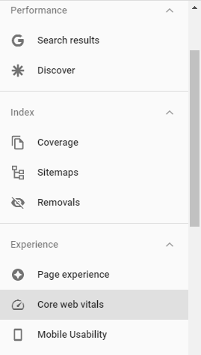Shopify is one of the fasting growing website platforms for ecommerce businesses, with well over a million online retailers using it as of 2020, across 175 countries. With many useful features ‘baked-in’ to the platform by default, such as seamless product and payment system integration and a wealth of apps and additional functionality available easily through their store, Shopify is a great solution for many ecommerce brands.
But once you have your Shopify website setup and ready to take purchases, you need people to visit it – and that means getting your website visible on search engines. That’s where having a good understanding of Search Engine Optimisation (SEO) comes in.
However, when it comes to best practice ecommerce SEO and Shopify, things aren’t always quite as straightforward as could be hoped.
Is Shopify good for SEO?
Shopify does have a lot of positive points for ecommerce brands, but it does currently leave a little to be desired when it comes to search engine friendliness by default. In order to follow SEO best practice guidelines and maximise organic visibility online, there will be some technical tweaks required to most Shopify sites.
This blog takes a look five of the main issues with doing SEO on a Shopify website and some of the ways to overcome these challenges.
SEO Shopify issue 1 – Default URL structure
The default URL structure for Shopify websites puts every page into a folder, which cannot be changed without having a developer make some technical changes to the way that the website works. For example, your page URLs will look something like this:
onlineshopdomain.co.uk/collections/women-shoes
onlineshopdomain.co.uk/products/blue-women-shoes
onlineshopdomain.co.uk/pages/shoe-care-information
onlineshopdomain.co.uk/blog/shoes-blog
This is a problem for SEO because ideally you want to have full control over the URL you use for each page on your website, so that it can be optimised properly for search engines to easily understand. This will make it easier for search engines to show the right page for the most relevant searches in their SERPs. For example, a URL with optimum structure for this category could look something like:
onlineshopdomain.co.uk/women-shoes/blue-shoes
It is usually possible for an experienced Shopify developer to change this structure into something that can work better for your brand from an SEO perspective, so it isn’t an insurmountable issue but it can take time and resources to solve.
SEO Shopify issue 2 – Duplicate content on multiple pages
By default, Shopify enables you to create “tag” pages to sort or filter products, but doesn’t support different content on these pages, so whatever content you use on the main page is duplicated across any others that fall under that category. For example, if you wanted to filter by shoe type, you might have these tag pages, which would all contain exactly the same text content.
onlineshopdomain.co.uk/collections/women-shoes/blue-shoes
onlineshopdomain.co.uk/collections/women-shoes/blue-shoes/sandals
onlineshopdomain.co.uk/collections/women-shoes/blue-shoes/stillettos
onlineshopdomain.co.uk/collections/women-shoes/blue-shoes/wedges
Duplicate content is considered a fairly significant SEO issue, with major search engines penalising sites that have a high proportion of it. Again, there are ways that an experienced Shopify SEO expert or developer can make the technical changes needed to avoid this issue and stop it from causing problems for your wider SEO efforts.
SEO Shopify issue 3 – Problems adding optimised content to some page types
Shopify is a platform that showcases visuals, as is understandable with ecommerce, where images can absolutely make or break product sales. However, from an SEO point of view, this does sometimes come at the expense of the ability to add a decent quantity of optimised content to category, product or other important pages on the site. Some of the Shopify themes and page templates are better than others in this regard, but it’s an issue we often see with all kinds of Shopify sites.
Without being able to add optimised content to pages, your site will struggle to let search engines know the relevance and context of the pages to people searching for the kinds of products you sell, which can have a very detrimental impact on how likely your pages are to rank in SERPs (Search Engine Result Pages).
As always, there are ways around this problem, but you may require a Shopify developer to implement the changes.
SEO Shopify issue 4 – Locked down robots.txt
The robots.txt file for Shopify websites is not editable by default. This file is used by search engines to determine which pages of the site should be indexed by them (and which should be ignored) and is used frequently by SEOs, who often want to add or remove something from this file.
As with the other issues, there is a workaround for this, but it’s less than ideal. You can add code to individual pages manually, but this can not only be time consuming but can also add to an issue common with Shopify sites which is explained below.
SEO Shopify issue 5 – Apps and manually added code causing website bloat
There are Shopify apps available that can help you to work around most of the issues already mentioned when it comes to trying to improve SEO on Shopify sites. However, the more apps you use with your site, the higher the chances that you’ll end up with a website that takes longer to load and has some usability issues. The same goes for manually adding in extra code to specific pages in order to get around some of the problems we’ve already covered.
Not only is a slow-loading website a turn-off for shoppers, who are likely to simply go elsewhere if a site is slow and not very responsive to them, this is also a key metric in 2021’s Core Web Vital update by Google which penalises websites that don’t perform well enough in certain areas.
Core Web Vitals and what it means for ecommerce websites is another whole blog post in itself, so the short version is that sites are now measured by:
- The time it takes to load the largest piece of web page content on the screen (which could be an image or video)
- The stability of content on your screen while the whole page loads
- The page’s usability and responsiveness i.e. how quickly the user gets a response when they click on something, like a button or a menu that expands
The more code that the browser has to process for a webpage, which can be increased significantly by using apps and other code you’ve manually added, the higher the chance that it will struggle on some or all of these measurements, which can cause real issues for SEO.
One of the main Shopify SEO tips in this area is to use as few apps as possible with your Shopify site; only utilising those which are essential for functionality and that don’t cause a noticeable slowing down of page loading speed.
There is a new tab in the Shopify Google Search Console interface which will provide you with details of any URLs where there are issues and where action is needed, on both desktop and mobile.
In summary, Shopify can be a great platform for ecommerce brands who want an online shop that is ready to go quickly and more or less out-of-the-box. However, SEO for Shopify needs to be considered as early as possible to ensure that you don’t suffer due to the common problems that businesses often find once they build a retail site on this platform.
If you want more information on how to develop an SEO strategy for your ecommerce website, get in touch with our team to find out how we can help.









